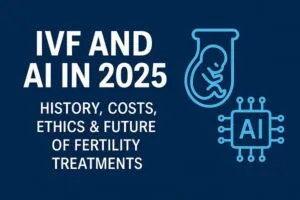Get to Know Your Body: The Science of Ovulation
The ovulation cycle is the period between two menstrual cycles where a woman’s body produces eggs. Ovulation occurs at different times throughout each month depending on many factors including age, lifestyle, diet, and genetics. In general, women have three types of ovulation cycles:
- Regular Cycles– These occur approximately once per month, lasting 28 days.
- Irregular Cycles– These occur less frequently than regular cycles, ranging anywhere from 11 to 21 days.
- Anovulatory Cycles– These are rare occurrences where no eggs are produced at all.
Ovulation Cycle: The Process

The ovulation cycle begins with the release of an egg from the follicle at the base of the ovary. As the egg travels down the fallopian tube towards the uterus, it passes through the cervix. When the egg reaches the end of the fallopian tube, it releases its grip on the wall and floats freely until it lands somewhere inside the uterine cavity. Once the egg is released, it takes about 12 hours for the egg to reach the uterus. If fertilization does not occur, the egg will die and be expelled from the body.
What Is Ovulation Cycle?
Ovulation occurs when an ovary releases an egg. An egg is released from an ovary after a woman’s menstrual cycle begins. A woman may have several eggs at any given time, although only one egg is released each month. When an egg is released, it travels down the fallopian tube toward the uterus where it attaches to the uterine wall. If fertilization does not occur, the egg detaches from the uterine wall and passes out of the body naturally.
How Does Ovulation Occur?
The hypothalamus gland located near the brain controls the release of hormones that regulate the female reproductive system. In women, the pituitary gland produces follicle-stimulating hormone (FSH) and luteinizing hormone (LH). FSH stimulates the production of estrogen while LH causes the production ofprogesterone. Estrogen increases the size of the ovarian follicles, causing them to swell and become ready to release an egg. Once the follicle reaches its peak size, it ruptures releasing the egg.
During ovulation, how likely is it that you’ll become pregnant?

- 5-8 Days – The first day of ovulation is known as the LH surge. This is the time when the female’s body releases the hormone luteinizing Hormone (LH) and prepares her eggs for fertilization. If conception does not occur within 8 days of ovulation, then the woman may have conceived naturally. However, if she does conceive, then the chances of pregnancy decrease each week.
- 9-12 Days – If conception occurs between 9-12 days, then the chance of pregnancy increases. Some women who are trying to conceive report having intercourse at least once per day during this period.
- 13+ Days – After 13 days, the chances of getting pregnant decrease. By 14 days, the chances of conceiving naturally drop dramatically.
Ovulation symptoms: what are they?
The first thing you should know about ovulation is that it happens at different times for each woman. You may have noticed that some women get their period earlier than others while others wait longer. If you’re wondering if you’re ovulating, here’s what you need to know.
Ovulation Symptoms – What Are They?
The ovulatory cycle begins approximately 10 days before a woman’s period. If she has not had intercourse during her fertile window (the time between ovulation and menstruation), she may experience some of these symptoms.
How Do You Know When To Expect Them?
You should expect to start experiencing symptoms around the mid-point of your menstrual cycle. Typically, the first sign is spotting. Spotting is caused by blood clots breaking off from the surface of the uterine lining. These clots release hormones that cause cervical mucus to thicken. In addition, spotting usually occurs about 12 hours after ovulation. After 2 weeks of consistent spotting, you’ll notice that a thickening of your cervical mucus appears. As the mucus gets thicker, you’ll begin having cramps and pressure changes in your pelvic area. Your breasts will feel tender, and your nipples will become engorged with milk.
Can You Tell If You’re Pregnant From Those Symptoms?
It’s unlikely that you could tell if you were pregnant based solely on those symptoms. However, if you missed your period, then you might want to consider getting tested. A pregnancy test kit will measure levels of human chorionic gonadotropin (hCG) in urine samples. High levels of hCG indicate that you are pregnant.
Ovulation Symptoms – Is There Any Way To Prevent Them?
If you are trying to get pregnant, don’t have sex at least two days prior to ovulating. Another way to prevent ovulation is to avoid caffeine and alcohol. Caffeine stimulates nerves in the uterus, causing them to contract and potentially interrupting implantation. Alcohol affects your body’s hormone balance, leading to irregular cycles.
How many days do you have to wait until you get pregnant after ovulation?
The answer to this question is pretty simple. You can only get pregnant if sperm meets ova (egg) and fertilizes them. If you have intercourse before day 14 of your cycle then you won’t get pregnant. However, if you have intercourse after day 14, you could still get pregnant. There’s no way to know exactly how long it takes for fertilization to occur. But, we do know that it happens at different times throughout the menstrual cycle.
How common is pain during ovulation?
The answer to this question is yes. Pain during ovulation is not uncommon and is often experienced by women who have never had children before. When the ovaries release eggs during menstruation, ovulation occurs. If the woman does not conceive at this point, she might experience some discomfort during her period.
However, the pain may last longer than usual and could even cause cramping. In addition, the pain may occur only once per month instead of twice. These symptoms usually happen due to hormonal changes and should subside after several months.
If you experience these symptoms, make sure to talk to your doctor about them. You might want to consider taking birth control pills if you do not wish to get pregnant.
Final Takeaway on the ovulation cycle:

Ovulation lasts approximately 12-24 hours
Ovulation is the final stage of ovulation where the released eggs are mature enough to leave the body. However, they do not fall out of the follicle at this point. Around day 14 of a woman’s cycle, she ovulates. If you’re trying to conceive naturally, ovulating earlier than this could mean that you’ll have fewer chances of getting pregnant. A longer period between ovulations may cause difficulties with conception if you want to try for pregnancy again.
Fertility decreases after intercourse
This means that sex before ovulation is less likely to result in pregnancy. It is much more effective to wait until just before ovulation occurs to increase fertility. The chances of conceiving are higher when intercourse occurs around the time of ovulation.
Fertility increases after ovulation
If you’re attempting to get pregnant without using birth control, ovulation is the best time to get busy! Just remember that having intercourse right around the time of ovulation doesn’t guarantee success. Sometimes women don’t even realize they’ve already ovulated. To make sure you know exactly when you ovulated, use an ovulation test kit. You should purchase these kits only online and from genuine vendors.
Ovulation begins about two weeks before menstruation
It takes two weeks for ovaries to become ready to release eggs. Around the fifteenth or sixteenth day of your menstrual cycle, ovulation usually happens. You might experience slight cramps, bloating, and breast tenderness at this time. Your cervical mucus will change colors in addition to becoming thicker and stickier. At this point, estrogen levels begin increasing in your system.
Menstruation starts soon after ovulation
Menstrual cycles start once a month approximately seven days after ovulation. Women who have trouble regulating their cycles tend to ovulate later in their cycle and menstruate sooner. Those who regularly have irregular cycles often have shorter intervals between cycles.
Menstruation ends several days after ovulation
After your period comes, you need to let your ovaries rest for three to five days before your next menstrual cycle begins. While you sleep, estrogen drops back down to its lowest level. When you wake up, estrogen begins rising rapidly again.
Ovaries produce 1 million ova per year
During puberty, the ovary produces millions of immature ova called oocytes. Each month, these ova mature into fully grown eggs, though they continue developing throughout childhood. By the age of 30, each ovary produces about 500 mature ova. After menopause, however, ovaries function primarily to secrete hormones rather than create eggs.





